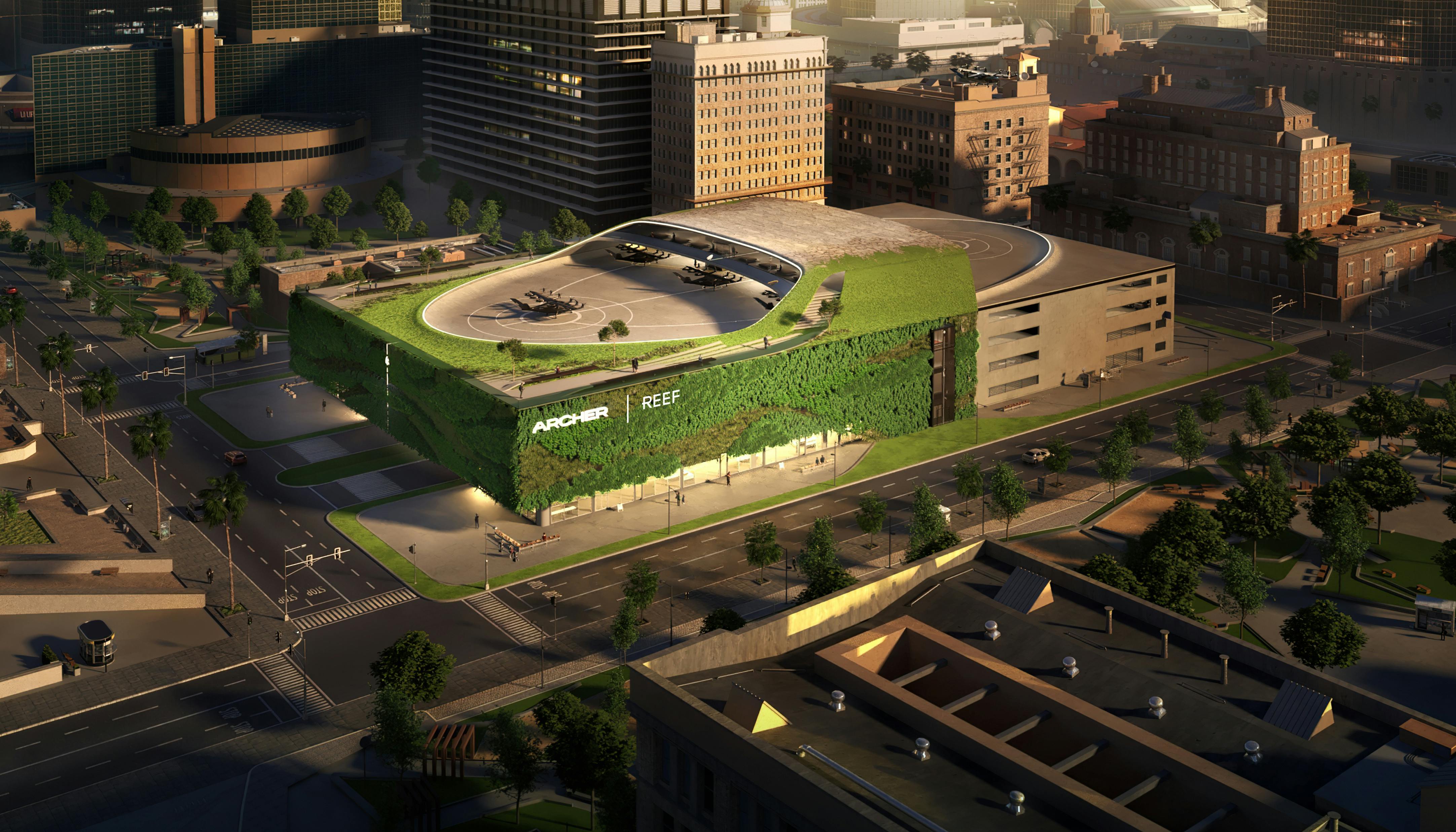
The greatest of journeys begin with a single step. That single step sets our direction, our cadence. It’s the access point from vision to reality. Jets fly out of airports, helicopters land and takeoff at heliports and ships set sail from seaports. Soon, electric vertical takeoff and landing (eVTOL) aircraft will provide a new type of transportation called Urban Air Mobility (UAM) and will need their own definitive hubs: a new type of takeoff and landing facility called a “vertiport”.
Working With Cities
As Archer plans for the future of UAM, we’re not just thinking about achieving regulatory approval or manufacturing a new type of aircraft that is safer, quieter, cleaner and more affordable to operate than ever before. To deliver on our vision of sustainable air mobility, we also have to build an ecosystem in cities to provide a UAM service. An important element in that ecosystem is vertiports, which future riders will visit to board their flights.
To build a valuable vertiport network, we’re considering practical infrastructure issues like the locations, requirements, standards and operations of our vertiports. It’s an area where the Archer team is already leading the industry, working with Urban Movement Labs, a non-profit organization spun out of the Los Angeles Mayor’s Office of Economic Development, to shape UAM policies in the city.
We are working collaboratively with cities to ensure the thoughtful integration of UAM into the fabric of our communities. That means bringing stakeholders together to actively consider all voices, which ultimately creates the greatest value of an urban air mobility service. Cities can't plan without the knowledge of operators like Archer. We need to provide them insight into our aircraft, its capabilities, how that aircraft will be operated, and the locations where we want to place these vertiports to provide maximum benefit to the local area.
Familiar Future Travel
Though a fixture of the next generation of travel, vertiports will still feel very similar to aviation infrastructure today. There will be three main areas at a vertiport: airside operations, landside operations, and a terminal building. Airside operations, much like current airports, will be where our aircraft takeoff and land as you fly between vertiports. Landside operations will incorporate passenger pick-up and drop-off zones. The terminal is similar to a train or airport terminal today: a place to relax and connect during your short wait to board the aircraft.
The great news is that since an eVTOL takes off and lands vertically, it does not need long runways. That, combined with the low noise signature of eVTOLs, means that vertiports could be conveniently located throughout urban and suburban hubs, instead of relegated to the outskirts of cities as is so commonly the case with current airport locations. It also allows for retrofitting existing structures to serve as vertiports.
Repurposing, Efficiently
Expanding existing forms of transit infrastructure can be both expensive and inefficient. San Francisco's Transbay Terminal took more than eight years to complete, costing more than $2 billion dollars. The Moynihan Train Hall at New York City’s Penn Station cost $1.6 billion, and took nearly 30 years, from start to finish.
We believe there’s a more cost-effective, less disruptive solution. That solution involves the light retrofit of existing infrastructure in cities. With this approach, a network of vertiports in a city can be developed for a fraction of the cost and allow for more flexible, distributed movement. One option Archer is exploring is converting the rooftops of parking structures into vertiports. The idea is attractive for several reasons. Parking rooftops are generally located in congested parts of cities, an issue UAM is trying to address, they’re built to handle significant weight loads and they are generally underused - who wants to pay to park, only to have one’s car sitting in the elements?
In the early years, we're looking to make positive use of otherwise under-utilized real estate in communities. The goal is to leverage these assets and convert them into something that creates more value for society. However, in the longer-term, as UAM operations scale, we envision purpose-built vertiports to support a high-volume of riders as the price of our service becomes comparable to car ridesharing today.
To develop an optimal vertiport network that creates significant public benefit, we are using data to understand traffic flows in and around cities. Once we have identified the most attractive locations, we’ll work with municipal officials to determine if the site meets the criteria for permitting. The final decision on vertiport locations balances customer demand, regulations, environmental concerns, customer needs, and data—optimizing for safety and public convenience. Regardless of where these vertiports are ultimately located, Archer is committed to shepherding in an era of UAM that is safe, accessible, and thoughtful for both cities and travelers. More than a new journey, we are moving towards a new age in transportation.

